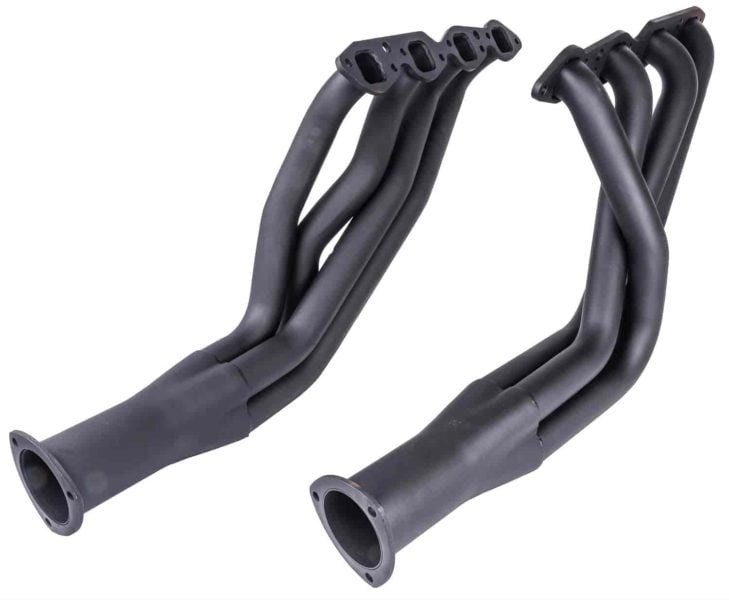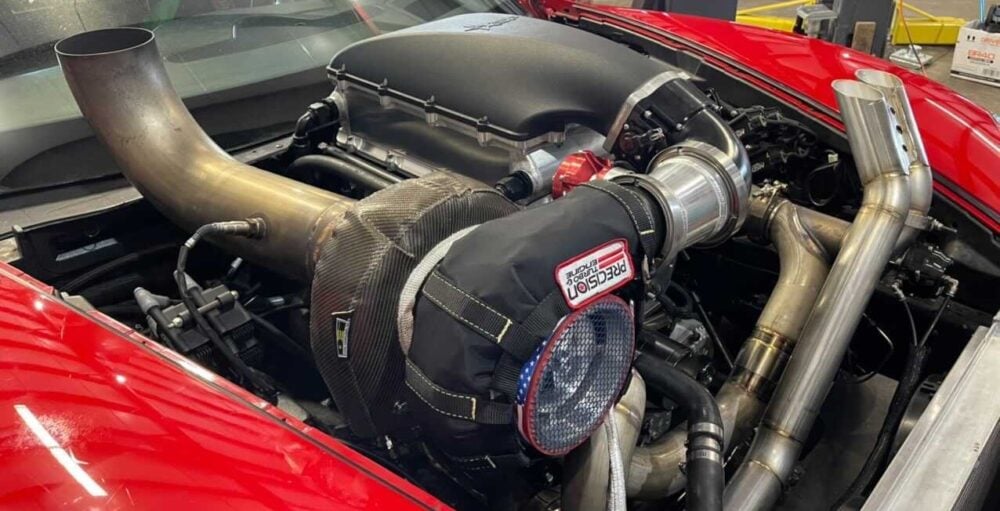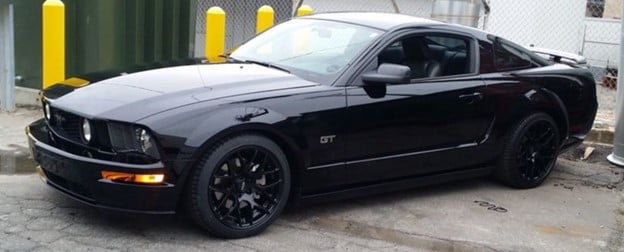
Each car on the road is a source of harmful carbon monoxide, hydrocarbons, and nitrogen oxides. It’s created by the combustion process inside the engine, and it’s spewed out of the tailpipe. With millions of cars being driven each day, this pollution and smog can create big problems. Exhaust emissions contribute to breathing illnesses, poor air quality, and environmental pollution. The catalytic converter burns these harmful pollutants after they leave the engine in the exhaust and before they go out into the atmosphere. Read on to learn more about catalytic converters.
How Do Catalytic Converters Work?
When exhaust gasses pass through a heated catalytic converter, two chemical reactions take place. The reduction catalyst is the first of the two catalytic events to occur. It uses metal catalysts to reduce harmful nitrogen oxides by separating the molecules into nitrogen and oxygen. The nitrogen is trapped within the converter, while the oxygen passes through. The oxidation catalyst is the second catalytic event. It reduces unburned hydrocarbons and carbon monoxide by burning them over the metal catalyst.
A catalytic converter filters out harmful byproducts in the exhaust gases and burns them up. And while the main function of a catalytic converter is to reduce harmful emissions, it also improves your car’s efficiency.
How to Tell if a Catalytic Converter is Bad
The indications that your catalytic converter is failing are a sluggish car engine or reduced acceleration and your Check Engine light is on. Get a mechanic to diagnose the problem as soon as you can, or dig into the problem on your own if you have the technology to do so. Dark exhaust smoke and the smell of sulfur or rotten eggs from your exhaust are more noticeable signs of a bad catalytic converter.
The catalytic converter typically has an oxygen sensor in front of it or between the exhaust manifold and the converter and one after it or between the converter and the muffler. The oxygen sensor in front is referred to as the upstream oxygen sensor and the one after is referred to as the downstream oxygen sensor. If your vehicle has two catalytic converters it has four oxygen sensors. These oxygen sensors give input to your Electronic Control Module (ECM) or engine computer that becomes inaccurate when your converter goes bad. If you were looking at a scan tool you see the readings of the downstream sensor mirroring the upstream sensor typically between 100 and 900 millivolts. The readings of the downstream should be slower without as much millivolt range. Your Check Engine light comes on because of the inaccurate reading on the downstream oxygen sensor.
The average cost of repairing a catalytic converter can range from $600 to $2,500. This is due to the catalytic converter requiring precious metals like platinum, rhodium, and palladium. Converters are expensive for auto repair shops because of the materials inside, resulting in a higher repair cost.
Why Catalytic Converters Are Being Stolen
It’s because of the precious metals present in the catalytic converter that they are often stolen. In recent years, the prices of these metals have shot through the roof, as supply has gone down.
Each of these metals is typically priced by the ounce. Platinum has seen a decrease in value since its peak in 2011 of around $1,700 per ounce. It is currently higher now at around $900 per ounce than it was twenty years ago, though. Palladium has risen to well over $2,000 per ounce from its $300 per ounce price in 2001.
Rhodium prices have risen astronomically. It was around $1,600 per ounce in 2001, but it has since risen to an average of about $18,000. The most current average of about $13,000 per ounce is still quite high, though it has come down in the past year.
Catalytic converter thieves get around $150 to $1500 for a catalytic converter, depending on the type of catalytic converter stolen. Scrap yards will buy them and have their metals recovered to sell again. Their location on the underside of vehicles can make them convenient to steal quickly, often in 60 seconds or less with a portable metal saw.

Vehicles Targeted the Most (2023)
Trucks:
According to the National Insurance Crime Bureau, the 1985 to 2021 Ford F-Series pickup truck is the most likely vehicle to have its catalytic converter stolen.
The 1999 to 2021 Chevrolet Silverado and the 1990 to 2022 Ford Econoline van are also very common The Toyota Tacoma just makes the list for the western United States.
In many cases, these trucks are easy to slide underneath and then access and remove the catalytic converter.
SUVs:
The 2007 to 2017 Jeep Patriot, 2005 to 2021 Chevrolet Equinox, and 1997 to 2020 Honda CR-V are the top SUVs on the NICB’s list of vehicles with the most catalytic converter thefts.
Other SUVs that make the regional lists of targeted vehicles include the 2008 to 2020 Subaru Forester and 2007 to 2020 Subaru Outback in both the west and northeast and the 2003 to 2011 Honda Element in the west.
Cars:
1989 to 2020 Honda Accord models come in second place overall to the Ford F-Series pickup trucks on the nationwide list. The 1987 to 2019 Toyota Camry and 2011 to 2017 Chrysler 200 also make the top ten list.
Other cars that see high regional catalytic converter theft numbers include the 1993 to 2020 Nissan Altima in the northeast and south, the 2008 to 2014 Dodge Avenger in the south, and the 2011 to 2019 Chevy Cruze, also in the south.
Hybrids:
The 2001 to 2021 Toyota Prius is on the NICB top ten list for catalytic converter theft mainly because of its position as the western United States’ most targeted vehicle. The Prius is not only one of the most popular hybrids on the road, but hybrid vehicles tend to have more valuable catalytic converters than conventional gasoline vehicles.
What Will Happen If You Do Not Fix This Problem?
If you don’t fix it your vehicle, it won’t be able to pass inspection because of the Check Engine light. Also, your downstream oxygen sensor gives false data to your engine computer resulting in poor performance. On top of that, you contribute to all the bad air quality that is so prevalent in our cities. If your catalytic converter gets blocked up like many do, your vehicle will become undrivable. It won’t develop any power and it just crawls along.
Need a new catalytic converter? Check out JEGS. You’ll find converters, mufflers, and other exhaust parts from top industry names to fit your car perfectly.





